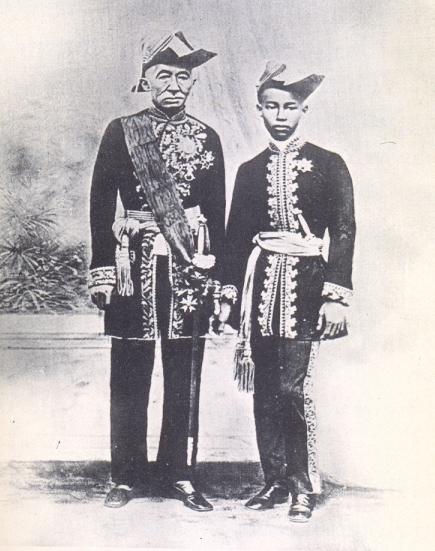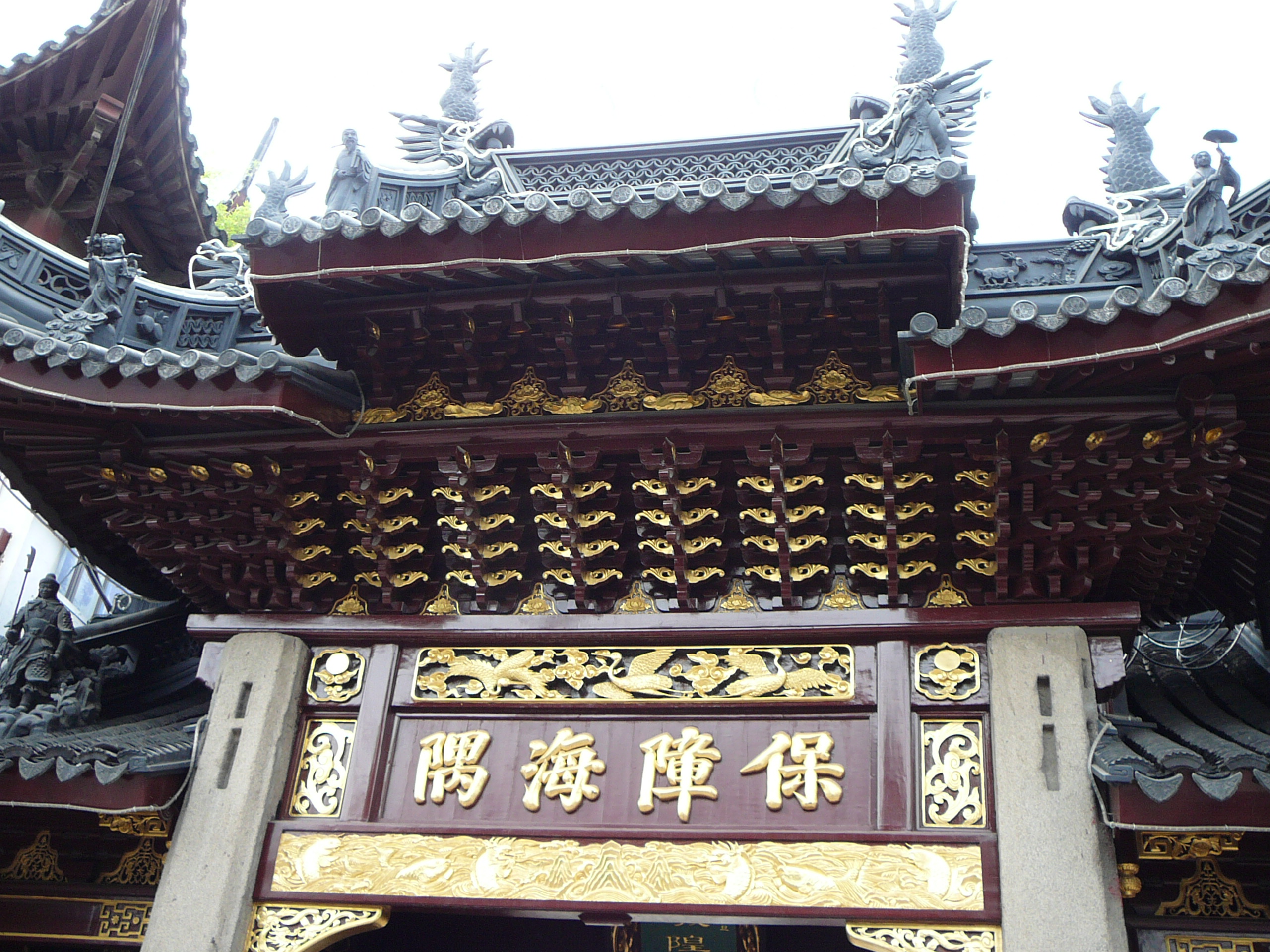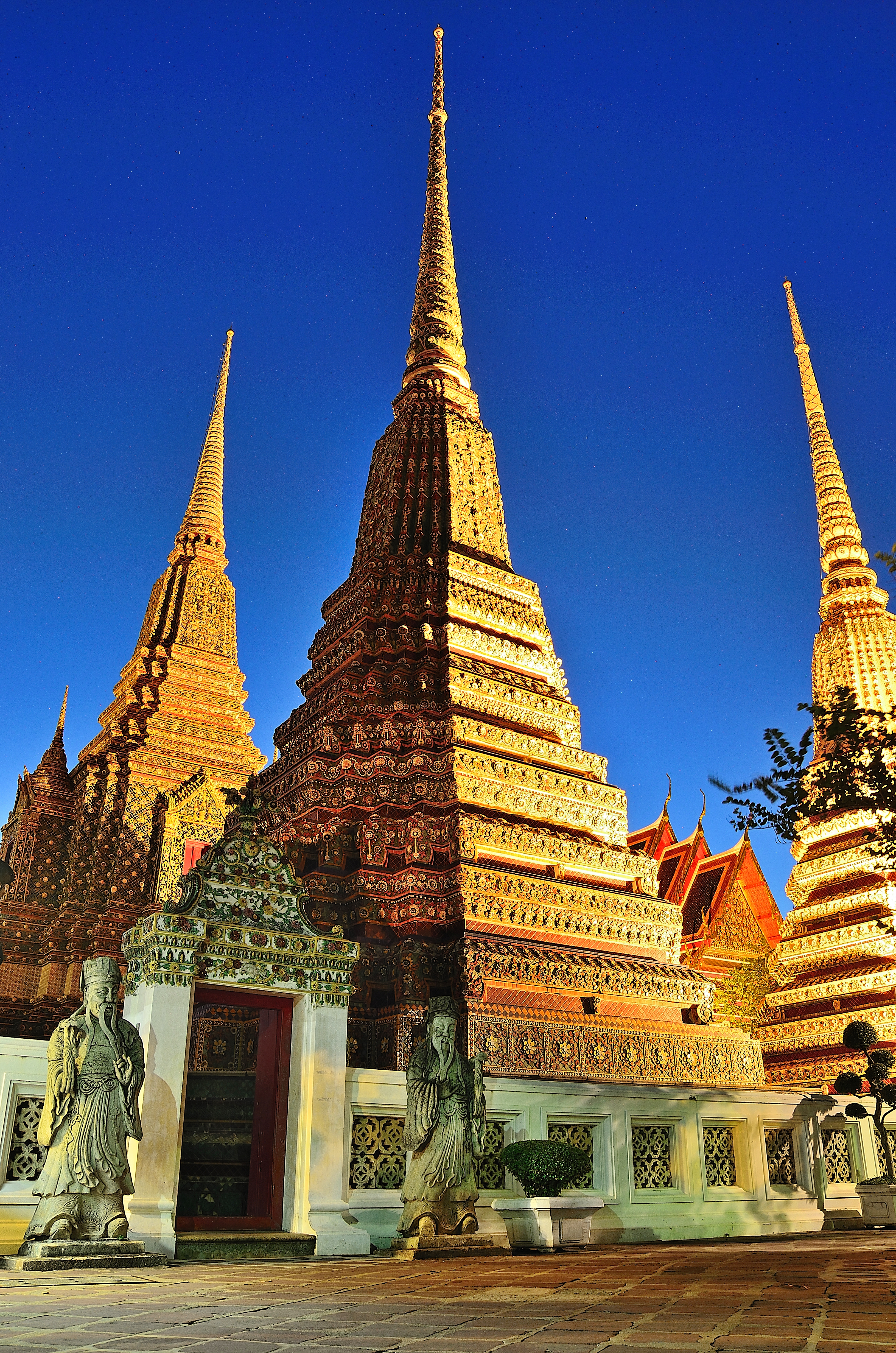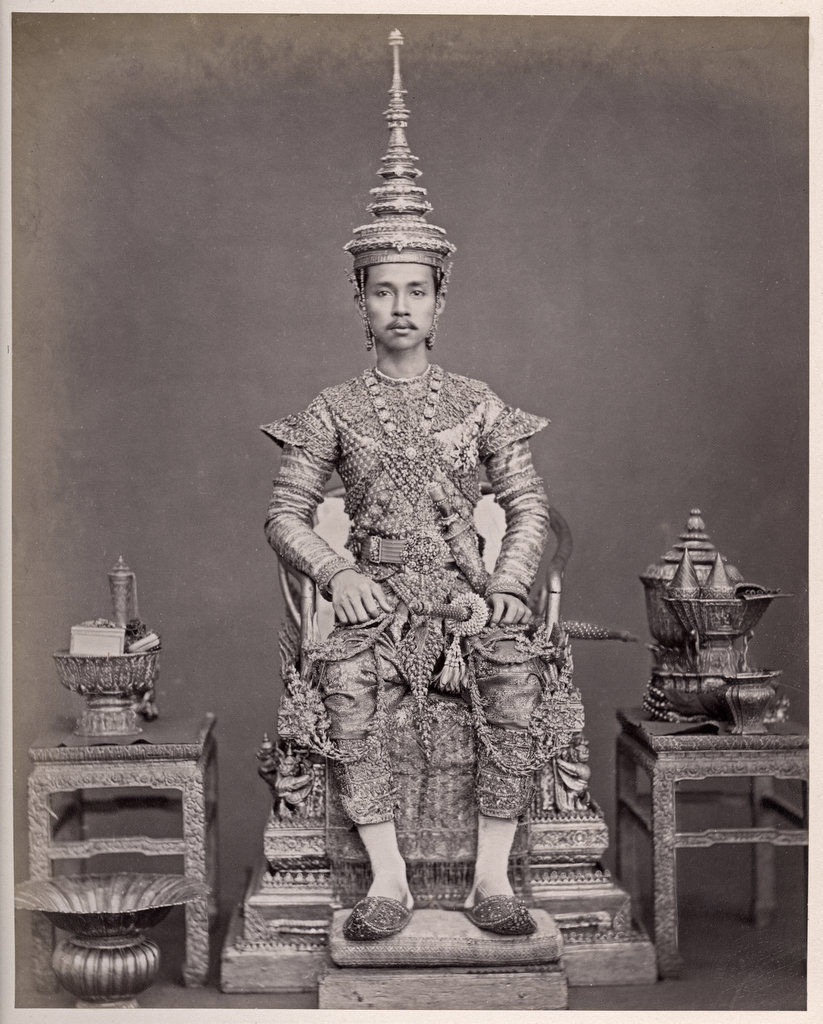|
Architecture In Thailand
The architecture of Thailand () is a major part of the country's cultural legacy and reflects both the challenges of living in Thailand's sometimes extreme climate as well as, historically, the importance of architecture to the Thai people's sense of community and religious beliefs. Influenced by the architectural traditions of many of Thailand's cultures, it has also developed significant regional variation within its vernacular and religious buildings. Although Siam urged to identify themselves as a modernized state, Western culture and influence was undesirable and inevitable. In an attempt to become distinguished, Thailand's ruling elite gravitated toward selective Modernization to avoid the undesired Western influence. History Dvaravati era (7th–11th century CE) The architecture of Dvaravati appears in the central region of Thailand. It used clay bricks and sometimes laterite. The construction of pagodas had a square base and an inverted-bell shape topped with a spire. ... [...More Info...] [...Related Items...] OR: [Wikipedia] [Google] [Baidu] |
Wat Suthat
Wat Suthat Thepwararam (, ) is a Buddhist temple in Bangkok, Thailand. It is a royal temple of the first grade, one of ten such temples in Bangkok (23 in Thailand). Construction was begun by King Rama I in 1807. In the beginning, it was initially called "Wat Maha Sutthawat" (วัดมหาสุทธาวาส) and was located in a combretum grove. Further construction and decorations were carried out by King Rama II who helped carve the wooden doors, but the temple was not completed until the reign of King Rama III in 1847 or 1848. This temple contains the Buddha image Phra Sri Sakyamuni (; ) which have been moved from Sukhothai Province. At the lower terrace of the base, there are 28 Chinese pagodas which symbolize the 28 Buddhas born on this earth. Wat Suthat also contains Phra Buddha Trilokachet (; ) in the '' ubosot'' (ordination hall) and Phra Buddha Setthamuni (; ) in the ''sala kan parian'' (meeting hall). In 2005, the temple was submitted to UNESCO for consid ... [...More Info...] [...Related Items...] OR: [Wikipedia] [Google] [Baidu] |
Bang Pa-In Royal Palace
Bang Pa-In Royal Palace (), also known as the Summer Palace, is a palace complex formerly used by the Thai kings. It lies beside the Chao Phraya River in Bang Pa-in District, Phra Nakhon Si Ayutthaya Province in Thailand. History King Prasat Thong constructed the original complexRajanubhab, D., 2001, Our Wars With the Burmese, Bangkok: White Lotus Co. Ltd., in 1632, but it fell into disuse and became overgrown in the late 18th and early 19th centuries, until King Mongkut began to restore the site in the mid-19th century. Most of the present buildings were constructed between 1872 and 1889 by King Chulalongkorn. Buildings Amidst vast gardens and landscaping stand the following buildings: Wehart Chamrun (Heavenly Light), a Chinese-style royal palace and throne room; the Warophat Phiman (Excellent and Shining Heavenly Abode), a royal residence; Ho Withun Thasana (Sages' Lookout), a brightly painted lookout tower; and the Aisawan Thiphya-Art (Divine Seat of Personal Freedom), a p ... [...More Info...] [...Related Items...] OR: [Wikipedia] [Google] [Baidu] |
King Rama V
Chulalongkorn (20 September 1853 – 23 October 1910), posthumously honoured as King Chulalongkorn the Great, was the fifth king of Siam from the Chakri dynasty, titled Rama V. Chulalongkorn's reign from 1868 until his death in 1910 was characterised by the modernisation of Siam, governmental and social reforms, and territorial concessions to the British and French empires. As Siam was surrounded by European colonies, Chulalongkorn, through his policies and acts, ensured the independence of Siam. Chulalongkorn was born as the son of Mongkut, the fourth king of Siam. In 1868, he travelled with his father and Westerners invited by Mongkut to observe the solar eclipse of 18 August 1868 in Prachuap Khiri Khan Province. However, Chulalongkorn and his father both contracted malaria which resulted in his father's death. The 1893 Franco-Siamese crisis and Haw wars took place during his reign. All his reforms were dedicated to ensuring Siam's independence given the increasing ... [...More Info...] [...Related Items...] OR: [Wikipedia] [Google] [Baidu] |
Paifang
A ''paifang'', also known as a ''pailou'', is a traditional style of Chinese architecture, often used in arch or gateway structures. Etymology The word ''paifang'' ( zh, c=牌坊, p=páifāng) was originally a collective term for the top two levels of administrative division and subdivisions of ancient Chinese cities. The largest division within a city in ancient China was a ''fang'' ( zh, c=坊, hp=fāng, labels=no), equivalent to a current day ward (electoral subdivision), ward. Each ''fang'' was enclosed by walls or fences, and the gates of these enclosures were shut and guarded every night. Each ''fang'' was further divided into several ''pai'' ( zh, c=牌, hp=pái, l=placard, labels=no), which is equivalent to a current day (unincorporated) community. Each ''pai'', in turn, contained an area including several hutongs (alleyways). This system of urban administrative division and subdivision reached an elaborate level during the Tang dynasty, and continued in the following dy ... [...More Info...] [...Related Items...] OR: [Wikipedia] [Google] [Baidu] |
Wat Pho
Wat Pho (, ), also spelled Wat Po, is a Buddhism, Buddhist temple complex in the Phra Nakhon, Phra Nakhon District, Bangkok, Thailand. It is on Rattanakosin Island, directly south of the Grand Palace, Bangkok, Grand Palace. Known also as the Temple of the Reclining Buddha, its official name is Wat Phra Chetuphon Wimon Mangkhalaram Rajwaramahawihan (; ). The more commonly known name, Wat Pho, is a contraction of its older name, ''Wat Photaram'' (; ). The temple is first on the list of six temples in Thailand classed as the highest grade of the first-class royal temples. It is associated with King Rama I who rebuilt the temple complex on an earlier temple site. It became his main temple and is where some of his ashes are enshrined. The temple was later expanded and extensively renovated by Rama III. The temple complex houses the largest collection of Buddha images in Thailand, including a 46 m long huge reclining Buddha. The temple is considered the earliest centre for public educat ... [...More Info...] [...Related Items...] OR: [Wikipedia] [Google] [Baidu] |
Rama VI
Vajiravudh (1 January 188126 November 1925) was the sixth king of Siam from the Chakri dynasty, titled Rama VI. He reigned from 1910 until his death in 1925. King Vajiravudh is best known for his efforts to create and promote Siamese nationalism. His reign was characterized by Siam's movement further towards democracy and minimal participation in World War I. He had keen interests in Siamese history, archaeology, and literature, as well as economics, politics and world affairs, and founded the country's first university, Chulalongkorn University. Education Vajiravudh was born on 1 January 1881 to Chulalongkorn and one of his four queens and half sister Saovabha Phongsri. In 1888, upon coming of age, Vajiravudh received the title ''Kromma Khun'' Debdvaravati (Prince of Ayutthaya). Also in 1888, Vajiravudh began suffering from a severe illness and was brought to Ko Sichang by his father to recover. Prince Vajiravudh was first educated in the royal palace in Thai and Engli ... [...More Info...] [...Related Items...] OR: [Wikipedia] [Google] [Baidu] |
Rama V
Chulalongkorn (20 September 1853 – 23 October 1910), posthumously honoured as King Chulalongkorn the Great, was the fifth Monarchy of Thailand, king of Siam from the Chakri dynasty, titled Rama V. Chulalongkorn's reign from 1868 until his death in 1910 was characterised by the modernisation of Siam, governmental and social reforms, and territorial concessions to the British Empire, British and French colonial empire, French empires. As Siam was surrounded by Territorial losses of Thailand, European colonies, Chulalongkorn, through his policies and acts, ensured the independence of Siam. Chulalongkorn was born as the son of Mongkut, the fourth king of Siam. In 1868, he travelled with his father and Westerners invited by Mongkut to observe the solar eclipse of 18 August 1868 in Prachuap Khiri Khan Province. However, Chulalongkorn and his father both contracted malaria which resulted in his father's death. The 1893 Franco-Siamese crisis and Haw wars took place during his reign ... [...More Info...] [...Related Items...] OR: [Wikipedia] [Google] [Baidu] |
King Rama IV
Mongkut (18 October 18041 October 1868) was the fourth king of Siam from the Chakri dynasty, titled Rama IV. He reigned from 1851 until his death in 1868. The reign of Mongkut was marked by significant modernization initiatives and diplomatic engagements, which played pivotal roles in shaping Thailand's trajectory towards progress and international relations. Siam first felt the pressure of Western expansionism during Mongkut's reign. Mongkut embraced Western innovations and initiated the modernization of his country, both in technology and culture—earning him the nickname "The Father of Science and Technology" in Siam. Mongkut was also known for appointing his younger brother, Prince Chutamani, as Second King, crowned in 1851 as King Pinklao. Mongkut told the country that Pinklao should be respected with equal honor to himself (as King Naresuan had done with his brother Ekathotsarot in 1583). During Mongkut's reign, the power of the House of Bunnag reached its zenith: It ... [...More Info...] [...Related Items...] OR: [Wikipedia] [Google] [Baidu] |
Ayutthaya Kingdom
The Ayutthaya Kingdom or the Empire of Ayutthaya was a Thai people, Thai kingdom that existed in Southeast Asia from 1351 to 1767, centered around the city of Phra Nakhon Si Ayutthaya (city), Ayutthaya, in Siam, or present-day Thailand. European travellers in the early 16th century called Ayutthaya one of the three great powers of Asia (alongside Vijayanagara Empire, Vijayanagara and China). The Ayutthaya Kingdom is considered to be the precursor of modern Thailand, and its developments are an important part of the history of Thailand. The name Ayutthaya originates from Ayodhya (Ramayana), Ayodhya, a Sanskrit word. This connection stems from the Ramakien, Thailand's national epic. The Ayutthaya Kingdom emerged from the Mandala (political model), mandala or merger of three maritime city-states on the Lower Chao Phraya Valley in the late 13th and 14th centuries (Lopburi province, Lopburi, Suphan Buri province, Suphanburi, and Ayutthaya). The early kingdom was a maritime confedera ... [...More Info...] [...Related Items...] OR: [Wikipedia] [Google] [Baidu] |
Teochew Dialect
Teochew, also known as Swatow or Teo-Swa, is a Southern Min language spoken by the Teochew people in the Chaoshan region of eastern Guangdong and by their diaspora around the world. It is sometimes referred to as ''Chiuchow'', its Cantonese rendering, due to English romanization by colonial officials and explorers. It is closely related to Hokkien, as it shares some cognates and phonology with Hokkien. Teochew preserves many Old Chinese pronunciations and vocabulary that have been lost in some of the other modern varieties of Chinese. As such, Teochew is described as one of the most conservative Chinese languages. History and geography Historically, the Teochew prefecture included modern prefecture-level cities of Chaozhou, Jieyang and Shantou. In China, this region is now known as Teoswa. Parts of the Hakka-speaking Meizhou city, such as Dabu County and Fengshun, were also parts of the Teochew prefecture and contain pocket communities of Teochew speakers. As the T ... [...More Info...] [...Related Items...] OR: [Wikipedia] [Google] [Baidu] |







